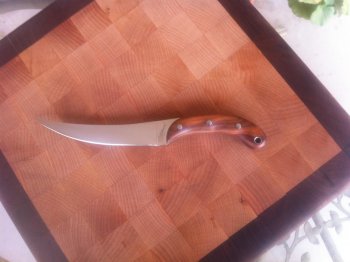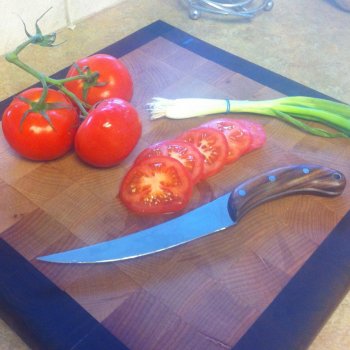Hello all - been thinking about making a cutting board for the wife. We've got a few wooden cutting boards, and one acrylic board the wife INSISTS on using for "hygiene" - says meat juices don't soak in it. Yea, the knives take a beating for sure.
What is the opinion on teak vs American Black Walnut wood? I've got those two woods, but might consider other woods.Cut up in 2" blocks for a 2" thick end grain board is my first though. Got to do more research and KD group is my first place to start.
Any comments 'n suggestions would be helpful and appreciated.
Ken H>
What is the opinion on teak vs American Black Walnut wood? I've got those two woods, but might consider other woods.Cut up in 2" blocks for a 2" thick end grain board is my first though. Got to do more research and KD group is my first place to start.
Any comments 'n suggestions would be helpful and appreciated.
Ken H>


